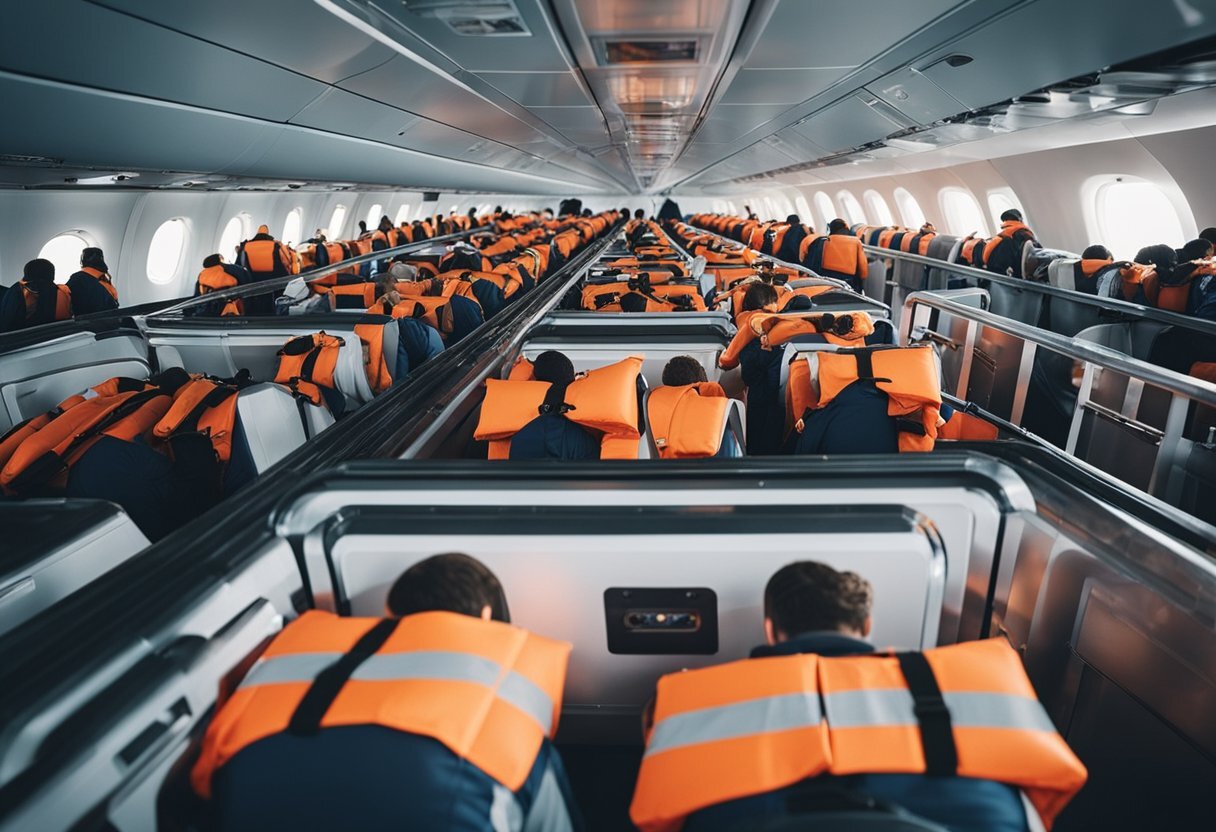
Ever wondered what happens during an aviation emergency? Aviation emergency procedures are crucial for ensuring passenger safety. These protocols cover everything from engine failures to medical emergencies. Pilots and cabin crew undergo rigorous training to handle such situations efficiently. Did you know that pilots must practice emergency landings regularly? Or that oxygen masks automatically deploy if cabin pressure drops? Understanding these procedures can make flying less intimidating. In this post, we’ll explore 17 fascinating facts about aviation emergency procedures. Buckle up and get ready to learn how the aviation industry keeps you safe in the skies!
Key Takeaways:
- Flight attendants undergo rigorous training to handle medical emergencies, fires, and evacuations, ensuring passenger safety with their expertise and first aid skills.
- Modern aircraft are equipped with safety features like oxygen masks, emergency exits, and fire extinguishhers to protect passengers during emergencies, providing peace of mind for travelers.
Understanding Aviation Emergency Procedures
Aviation emergency procedures are crucial for ensuring passenger safety. These protocols help manage unexpected situations during flights. Let's explore some fascinating facts about these procedures.
The Role of Flight Attendants
Flight attendants play a vital role in managing emergencies. They are trained to handle various scenarios to keep everyone safe.
-
Flight attendants undergo rigorous training. They learn how to manage medical emergencies, fires, and evacuations. This training includes both classroom instruction and practical drills.
-
They perform safety demonstrations before every flight. These demonstrations show passengers how to use safety equipment like seat belts, oxygen masks, and life vests.
-
Flight attendants are trained in first aid. They can handle minor medical issues and assist with more serious conditions until professional medical help is available.
Aircraft Safety Features
Modern aircraft come equipped with numerous safety features designed to protect passengers during emergencies.
-
Oxygen masks deploy automatically when cabin pressure drops. These masks provide passengers with oxygen until the aircraft descends to a safer altitude.
-
Emergency exits are clearly marked and equipped with inflatable slides. These slides help passengers evacuate quickly in case of an emergency landing.
-
Aircraft are equipped with fire extinguishers. These are strategically placed throughout the cabin to deal with any onboard fires.
Communication During Emergencies
Effective communication is essential during an emergency. Pilots and flight attendants must coordinate their actions to ensure passenger safety.
-
Pilots use specific codes to communicate emergencies to air traffic control. For example, "Mayday" signals a life-threatening emergency, while "Pan-Pan" indicates an urgent situation that is not immediately life-threatening.
-
Flight attendants use intercom systems to relay instructions to passengers. Clear communication helps ensure that everyone knows what to do during an emergency.
-
Passengers are encouraged to remain calm and follow crew instructions. Panic can hinder evacuation efforts and put lives at risk.
Emergency Landing Procedures
Emergency landings are rare but can happen due to various reasons like technical failures or medical emergencies.
-
Pilots are trained to perform emergency landings. They practice scenarios in simulators to prepare for real-life situations.
-
Airports have emergency response teams. These teams are ready to assist with evacuations and provide medical care if needed.
-
Passengers are instructed to adopt the brace position. This position helps protect them from injury during an emergency landing.
Post-Emergency Protocols
After an emergency, there are specific protocols to ensure passenger safety and well-being.
-
Passengers are evacuated to a safe distance from the aircraft. This prevents injury from potential hazards like fire or explosions.
-
Emergency services provide medical care to those in need. They also help with the psychological impact of the emergency.
-
Airlines conduct thorough investigations. These investigations help identify the cause of the emergency and improve future safety measures.
Real-Life Examples
Learning from real-life incidents helps improve aviation safety.
-
The "Miracle on the Hudson" is a famous example. In 2009, Captain Chesley "Sully" Sullenberger safely landed US Airways Flight 1549 on the Hudson River after a bird strike disabled both engines.
-
The 1983 Gimli Glider incident involved an Air Canada flight that ran out of fuel mid-air. The pilots managed to glide the aircraft to a safe landing at an abandoned airstrip.
Understanding these facts about aviation emergency procedures can help passengers feel more secure when flying.
Final Thoughts on Aviation Safety
Aviation emergency procedures are vital for ensuring passenger safety. Knowing that pilots and crew undergo rigorous training to handle emergencies can provide peace of mind. From oxygen masks to emergency exits, every detail is meticulously planned. Flight attendants are not just there for service; they're trained to manage crises. Aircraft design also plays a crucial role, with features like fire-resistant materials and advanced communication systems. Understanding these facts can make you feel more secure next time you fly. Remember, the aviation industry prioritizes safety above all else. So, next time you board a plane, you can trust that countless measures are in place to protect you. Flying is one of the safest modes of travel, thanks to these well-thought-out procedures. Stay informed, stay safe, and enjoy your journey.
Frequently Asked Questions
Was this page helpful?
Our commitment to delivering trustworthy and engaging content is at the heart of what we do. Each fact on our site is contributed by real users like you, bringing a wealth of diverse insights and information. To ensure the highest standards of accuracy and reliability, our dedicated editors meticulously review each submission. This process guarantees that the facts we share are not only fascinating but also credible. Trust in our commitment to quality and authenticity as you explore and learn with us.


